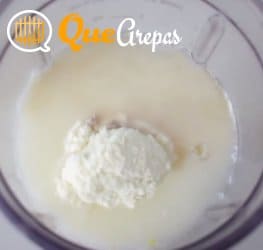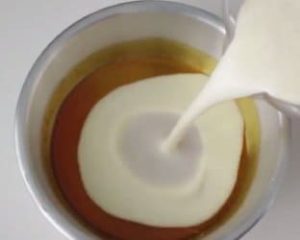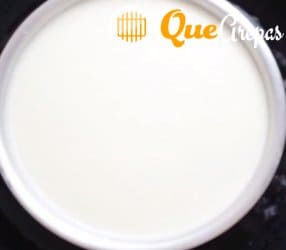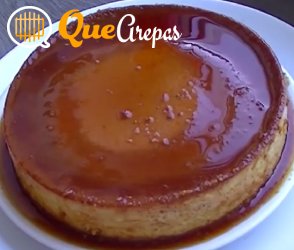Delicious and tempting: The authentic Venezuelan Quesillo
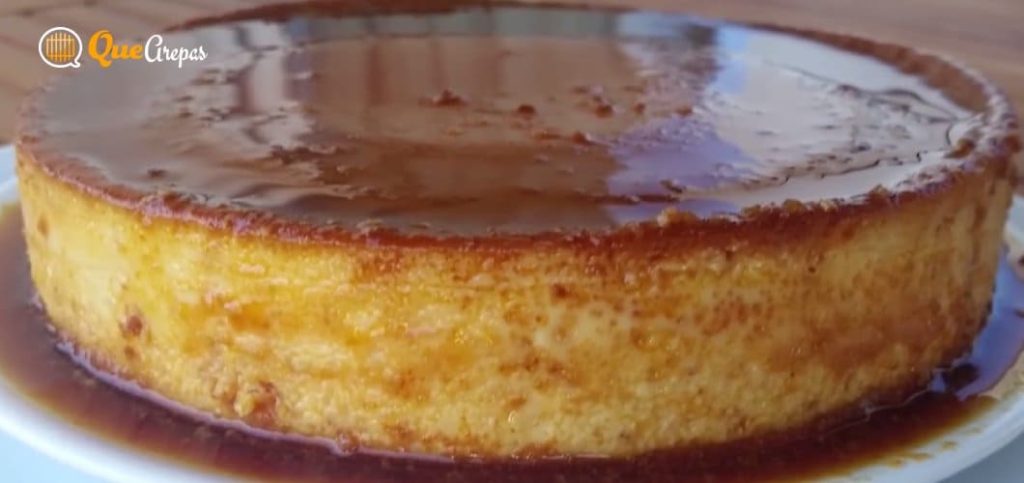
Desserts, Venezuelan Bienmesabe, Torta de Pan, Conserva de Coco, Dulce de Lechoza, Venezuelan Coconut Majarete
Welcome to a culinary journey full of sweetness and temptation! Are you ready to discover the authentic Venezuelan Quesillo, a dessert that will captivate you from the first bite? Get ready to immerse yourself in the silky smoothness, sweet taste and irresistible aroma of this jewel of Venezuelan gastronomy. In this article, I will reveal the secrets behind this delicacy and guide you step by step so you can recreate it in the comfort of your own home. Are you ready to let yourself be seduced by the Venezuelan Quesillo? Join me and let yourself be carried away by this unforgettable culinary experience!
- Origin and history of the Venezuelan Quesillo
- Characteristics and key components of the Venezuelan Quesillo
- Step by step preparation of Venezuelan Quesillo
- Venezuelan Quesillo Recipe - quearepas.com
- Variants and customization of Quesillo
- Venezuelan Quesillo in culture and celebrations
- Tips for presenting and serving Quesillo
- Popularity of Venezuelan Quesillo outside Venezuela
- Frequently Asked Questions
Origin and history of the Venezuelan Quesillo
Venezuelan Quesillo has a fascinating history that dates back to colonial times in Venezuela. Its origin lies in the fusion of cultural influences that occurred during colonial times, when the Spanish brought with them their techniques and dessert recipes.
Venezuelan Quesillo is believed to have its roots in the Spanish flan, but over time it has acquired unique characteristics that differentiate it from its European counterpart. Local ingredients and Venezuelan culinary creativity have left their mark on this delicious creation.
For centuries, Quesillo has been an essential component in the Venezuelan culinary tradition, present in celebrations, festivities and special occasions. It has been passed down from generation to generation, becoming a symbol of the hospitality and sweetness that characterizes Venezuelan culture.
Quesillo has evolved over time, adapting to the tastes and preferences of each region of Venezuela. In some places, orange or lemon zest has been added to give it a citric touch, while others have experimented with different cheeses to achieve a unique texture and flavor.
Today, Venezuelan Quesillo continues to be a highly appreciated delicacy present on the Venezuelan table. It has also transcended the country's borders, gaining popularity in other parts of the world thanks to the Venezuelan diaspora and its irresistible flavor.
Characteristics and key components of the Venezuelan Quesillo
Venezuelan Quesillo is distinguished by its unique characteristics that make it irresistible and memorable. Below, we will explore the key components that contribute to its uniqueness:
- Soft and silky texture: Quesillo is characterized by its delicate and silky texture. As it slides smoothly in each spoonful, it melts in the mouth, providing a pleasant sensory experience.
- Sweet and balanced flavor: The perfect balance between sweetness and delicacy is one of the most outstanding characteristics of Venezuelan Quesillo. The combination of sugar, eggs and a touch of vanilla creates a harmony of flavors that delights the palate.
- Intoxicating aroma: The aroma of Venezuelan Quesillo is irresistible. The sweet aroma of caramel and vanilla mingles in the air, generating an anticipation that awakens the senses and increases the appetite.
- Key ingredients: Quesillo is made primarily with eggs, condensed milk, evaporated milk and sugar. These ingredients are carefully combined to achieve the characteristic texture and flavor. In addition, grated queso criollo or queso de año adds a distinctive touch to Venezuelan Quesillo, adding a note of flavor and a special consistency.
- Attractive presentation: Venezuelan Quesillo is presented in a cylindrical and soft shape, with a smooth and shiny surface. It is traditionally unmolded and served in generous slices, highlighting its tempting and appetizing appearance.
Together, these characteristics make the Venezuelan Quesillo an unforgettable dessert, capable of captivating any sweet tooth. From its silky texture and balanced flavor to its attractive presentation, each element comes together to create an exceptional gastronomic experience.
Step by step preparation of Venezuelan Quesillo
Preparing a delicious Venezuelan Quesillo at home may seem complicated, but following these simple steps, you will achieve a perfect result: thanks to EliRecetas' recipe and her youtube channel.
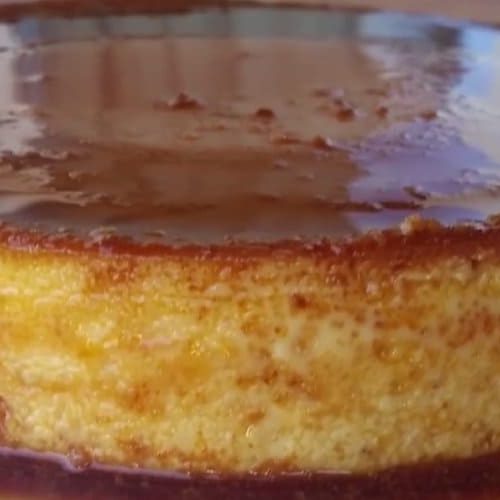
Venezuelan Quesillo Recipe - quearepas.com
Ingredients
For the caramel
- 5 tbsp Sugar
- 4 tbsp Water
For the Quesillo
- 5 units Eggs
- 1 pot Condensed milk
- 5 tbsp Powdered milk
- 1 unit Water
- 1 unit Vanilla to taste
- 1 unit Rum to taste
Instructions
For the Caramel
- In a quesillo or flan pan, place the sugar and place over medium-low heat. Let the sugar melt slowly until you obtain a smooth, golden caramel. Stir the pan to make sure the caramel covers the entire surface.
Mixing ingredients for Quesillo
- In the blender cup, mix the condensed milk and whole milk. Add the eggs, vanilla essence and rum. Beat well until a homogeneous mixture is obtained.
- Pour the mixture: Pour the mixture carefully into the mold with the caramel, making sure not to fill it to the brim. Leave a space for the Quesillo to grow during baking.
Cooking the Quesillo
- Bain Marie: Place the mold inside a larger baking dish or pan. Add hot water to the pan, about halfway up the pan. This will create a bain-marie that will allow for a smooth and even baking.Baking: Preheat the oven to 180°C. Then place the pan with the mold inside the oven and bake for approximately 50-60 minutes, or until a toothpick inserted in the center comes out clean. Baking time may vary, so be sure to check for proper consistency.
Cooling and demolding
- Cooling and unmolding: Once the Quesillo is ready, remove from the oven and let it cool to room temperature. Then, refrigerate it for at least 4 hours, or preferably overnight, so that it takes consistency.Unmolding and presentation: To unmold the Quesillo, run a knife around the edges to loosen it. Place a plate upside down over the mold and turn quickly so that the Quesillo falls into the plate, along with the caramel.
Video
Variants and customization of Quesillo
Venezuelan Quesillo is a versatile dessert that lends itself to adapt to different tastes and preferences. Here are some variations and customization options you can explore to give Quesillo a unique touch:
- Flavored Quesillo: Add ingredients such as cocoa powder, instant coffee dissolved in hot water or lemon or orange zest to create flavor variations. These ingredients will give an interesting twist to the traditional Quesillo flavor.
- Fruit Quesillo: Experiment with adding pureed fruits such as mango, passion fruit (parchita), guava or ripe banana. These fruits will give a tropical and refreshing touch to Quesillo.
- Nut or chocolate Quesillo: Add chopped walnut pieces, almonds or chocolate chips to the mixture before baking. This will add a crunchy texture and a richer, more indulgent flavor to the dessert.
- Light Quesillo: If you prefer a lighter version of Quesillo, you can replace condensed milk and evaporated milk with skim milk and use natural sweeteners such as stevia or panela. Although the consistency and flavor may vary, this option is ideal for those looking for a healthier alternative.
- Lactose-free Quesillo: If you are lactose intolerant, you can use lactose-free milk and replace the grated cheese with lactose-free cheese or even use vegetable milk, such as almond, rice or coconut milk. Be sure to adjust the quantities and cooking times as needed.
It is important to maintain the right proportion of liquid ingredients and eggs to ensure a good consistency. Try different combinations and quantities until you find the variation you like best.
Venezuelan Quesillo in culture and celebrations
Venezuelan Quesillo has a special place in Venezuelan culture and celebrations. It is an iconic dessert that has become a symbol of hospitality and sweetness in the country. Below, we will explore its role in Venezuelan culture and festivities:
- Family and social celebrations: Quesillo is a frequent guest at the tables of Venezuelan family celebrations, such as birthdays, weddings, baptisms and Christmas parties. It is considered a traditional dessert that cannot be missed in these special occasions. Its presence in these events strengthens family ties and symbolizes the sweetness and generosity of Venezuelan culture.
- Holy Week: During Holy Week, Quesillo acquires a particular relevance in Venezuela. It is a deep-rooted tradition to share and enjoy this dessert during this time of the year. Many Venezuelan families gather to prepare and taste Quesillo as part of the religious and festive celebrations surrounding Holy Week.
- Gifts and presents: Quesillo has also become a popular gift in Venezuela. On special occasions, such as visits to family or friends, it is common to bring a homemade Quesillo as a token of affection and appreciation. It is a meaningful gesture that shows the importance of sharing and enjoying this delicacy in Venezuelan culture.
- Venezuelan Diaspora: The Venezuelan Diaspora has taken the Quesillo tradition with it to different parts of the world. In places where Venezuelan communities have settled, this dessert has become recognized and appreciated, not only as a symbol of Venezuelan gastronomy, but also as a connection with roots and cultural identity.
Venezuelan Quesillo, with its unparalleled flavor and its presence in celebrations and traditions, has left a deep mark on Venezuelan culture. It is a dessert that brings families together, evokes moments of joy and longing, and represents the sweetness and hospitality that characterizes this beautiful country.
Tips for presenting and serving Quesillo
The presentation and serving of Venezuelan Quesillo are important aspects to highlight its beauty and delight those who enjoy it. Here are some tips to present and serve Quesillo in a charming way:
- Perfect unmolding: For a clean and trouble-free unmolding, be sure to run a knife around the edges of the mold before turning it over onto the presentation plate. This will help the Quesillo release easily and retain its shape.
- Shiny caramel: The caramel that coats the Quesillo is part of its visual appeal. To keep it shiny and glossy, avoid refrigerating the Quesillo before serving, as humidity can dull the caramel. It is best refrigerated after serving.
- Generous slices: Slice the Quesillo generously to enhance its texture and presentation. Thicker slices allow you to appreciate the smoothness and silky consistency of the dessert. Be sure to use a sharp knife for clean cuts.
- Creative accompaniments: Quesillo can be enjoyed on its own, but you can also offer creative accompaniments that enhance its flavor. Some popular options include a light sprinkle of cinnamon sprinkled over the Quesillo or a sprig of fresh mint as a garnish. These small details add a touch of elegance and freshness.
- Artistic presentation: To create an artistic presentation, you can decorate the dish with a touch of liquid caramel in the form of threads or make a swirl of whipped cream around the Quesillo. You can also accompany the Quesillo with fresh fruits, such as strawberries or pineapple slices, to add color and contrast.
- Ideal temperature: Serve Quesillo at room temperature or slightly chilled, as this enhances its flavor and texture. Avoid serving it too cold, as this can alter the flavor experience and make the texture less smooth.
Popularity of Venezuelan Quesillo outside Venezuela
Venezuelan Quesillo has gained popularity outside Venezuela's borders and has conquered the palate of people from different cultures around the world. Its unique flavor and delicate texture have captured the attention of international dessert lovers. Below, we will explore the popularity of Venezuelan Quesillo in different places:
- Latin America: In Latin American countries such as Colombia, Ecuador and Peru, Venezuelan Quesillo has gained a following and has become a recognized dessert. Venezuelans who have settled in these countries have taken their love for Quesillo with them and have shared their recipe with local communities, thus generating an appreciation for this Venezuelan delicacy.
- United States: In the United States, especially in cities with a large Latino population, Venezuelan Quesillo has found its way onto the menus of restaurants and bakeries. Venezuelan chefs and entrepreneurs have promoted Quesillo as an authentic dessert and have made it appreciated by local residents and visitors.
- Europe: In European countries, such as Spain and Italy, Venezuelan Quesillo has aroused interest and has become an exotic option in some restaurants and gastronomic events. The mixture of flavors and the smoothness of Quesillo have conquered European palates, who have adopted this dessert as part of their culinary repertoire.
- Australia and Canada: In countries such as Australia and Canada, with a growing Venezuelan community, Quesillo has become popular as a typical dessert that represents Venezuelan culture and identity. You can find establishments and events dedicated to Venezuelan gastronomy where Quesillo has a prominent place on the menu.
The popularity of Venezuelan Quesillo outside Venezuela is a testimony to its quality and its ability to conquer new palates. The Venezuelan diaspora, as well as efforts to promote Venezuelan gastronomy, have been key to making this dessert known in different corners of the world. Quesillo has found its place in the international culinary scene, leaving a sweet and seductive mark on those who try it.
We invite you to continue tasting Venezuelan desserts along with the tastiest arepas.
Frequently Asked Questions
What is the difference between Venezuelan Quesillo and flan?
Venezuelan Quesillo and flan are similar desserts in their base, but have some key differences. Venezuelan Quesillo is distinguished by the use of condensed milk and evaporated milk, which gives it a denser and creamier consistency. In addition, Quesillo usually contains grated cheese in its preparation, which gives it a distinctive flavor. On the other hand, traditional flan is made with regular milk and does not contain grated cheese. In short, Venezuelan Quesillo has a firmer texture and a slightly different flavor than the classic flan.
Can I make Quesillo without using the oven?
Yes, it is possible to make Quesillo without using an oven. There are alternative methods, such as using a pressure cooker (known as a "pressure cooker") or a slow cooker. These methods require adjusting cooking times and following specific instructions to achieve the proper consistency of Quesillo. However, the traditional bain-marie baking method is the most commonly used and guarantees the best results.
How long does Quesillo keep?
Quesillo can be kept in the refrigerator for approximately 4 to 5 days, as long as it is properly stored in an airtight container. After that time, its quality may deteriorate and lose its freshness and flavor. Remember that when refrigerating it, it is advisable to cover it with plastic wrap or a lid to prevent it from absorbing odors from other foods in the refrigerator.
Can I freeze Quesillo?
Yes, it is possible to freeze Quesillo to preserve it for a longer period of time. To do so, it is important to make sure it is completely cooled and wrap it hermetically in plastic wrap or in a freezer-safe container. When defrosting it, it is recommended to defrost it slowly in the refrigerator and not in the microwave, to maintain its texture and flavor. Note that the consistency of Quesillo may change slightly after freezing, but it will still be delicious.
Can Quesillo be made without eggs?
No, eggs are an essential component in the preparation of Venezuelan Quesillo. They contribute to the texture and structure of the dessert, helping it to remain firm and soft. If you have an allergy to eggs or prefer an egg-free option, it is possible to find alternative vegan flan recipes that use ingredients such as tofu or agar-agar to achieve a similar consistency, but they would not be considered "Quesillos" in the traditional sense.
If you want to know other articles similar to Delicious and tempting: The authentic Venezuelan Quesillo you can visit the category Desserts.


